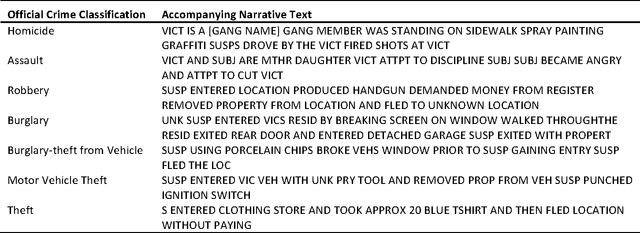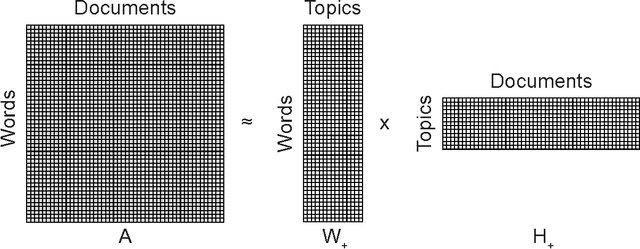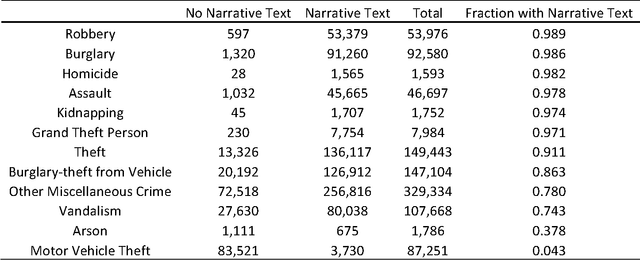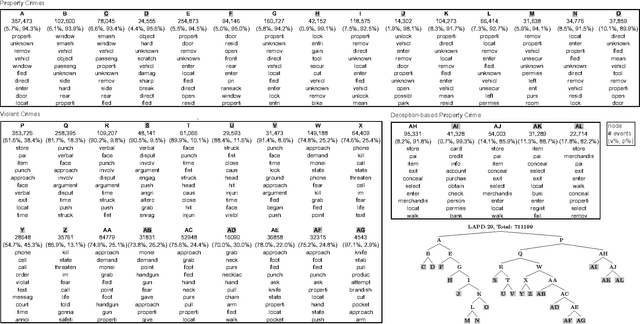Crime Topic Modeling
Paper and Code
Aug 06, 2018



The classification of crime into discrete categories entails a massive loss of information. Crimes emerge out of a complex mix of behaviors and situations, yet most of these details cannot be captured by singular crime type labels. This information loss impacts our ability to not only understand the causes of crime, but also how to develop optimal crime prevention strategies. We apply machine learning methods to short narrative text descriptions accompanying crime records with the goal of discovering ecologically more meaningful latent crime classes. We term these latent classes "crime topics" in reference to text-based topic modeling methods that produce them. We use topic distributions to measure clustering among formally recognized crime types. Crime topics replicate broad distinctions between violent and property crime, but also reveal nuances linked to target characteristics, situational conditions and the tools and methods of attack. Formal crime types are not discrete in topic space. Rather, crime types are distributed across a range of crime topics. Similarly, individual crime topics are distributed across a range of formal crime types. Key ecological groups include identity theft, shoplifting, burglary and theft, car crimes and vandalism, criminal threats and confidence crimes, and violent crimes. Though not a replacement for formal legal crime classifications, crime topics provide a unique window into the heterogeneous causal processes underlying crime.
 Add to Chrome
Add to Chrome Add to Firefox
Add to Firefox Add to Edge
Add to Edge